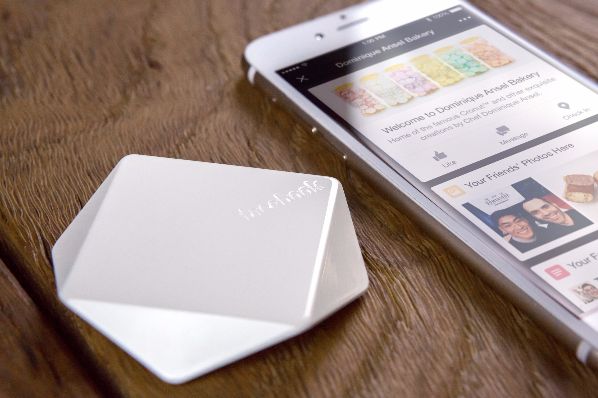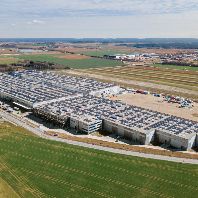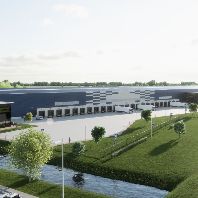Smartphones have become an integral part of the retail experience whether it be making online purchases or referring to sites while in-store for price comparison and product reviews. But with the dawn of beacon technology, smartphones can now provide the responsive, personalised shopping experience both customers and retailers desire. Consequently, brands are taking stock and utilising beacons as a means of attracting consumers who are already heavily engaged with their mobile devices 24 hours a day.
Beacons are inexpensive compact devices that communicate with nearby smartphones via Bluetooth low energy (BLE) – a simplified variant of traditional Bluetooth that can transfer small amounts of data with minimal impact on the end users device battery life. When beacons are employed in stores they can alert customers with location-relevant notifications via apps. Notification possibilities are endless; from ads and supplementary product information to customer offers and promotions, beacons grant retailers direct access to customers in stores.
Consequently, beacons become a gateway for real-time marketing. This may explain why beacons have gained most traction as a mechanism for mobile couponing. According to Shopkick, half of beacontriggered messages sent currently take the form of coupons. Although early adopters of beacons have primarily attracted coupon clippers via brand apps, over time they will present opportunities for more intuitive loyalty programmes.
Additionally, beacons afford retailers the means for accurate mass data collection. Big data is increasingly important for retailers as they seek to predict trends and plan accordingly whilst improving the customer experience in light of insights and analysis. Integrating beacons into a brand’s CRM, resulting data has the potential to offer retailers unique insight into consumer behaviour, the effectiveness of marketing, merchandising and loyalty programmes, service quality and much more. The long term potential for providing accurate, real time data is of significant importance, potentially revolutionising how retailers interact and respond to their customers worldwide.
Keeping your customers loyal
One pioneer of beacon-based loyalty programmes is the global hospitality chain, Marriott International. The renowned hotel group has been running a pilot programme in a small handful of their properties designed to enhance the Marriot Rewards loyalty programme. The push messaging pilot features a new incentive, LocalPerks, which offer location-specific rewards for customers using the dedicated app. This builds upon the company’s existing PlusPoints rewards programme that links social media activity to a loyalty point system and works alongside the simultaneously launched FlashPerks microsite.
In the hotels that are testing the programme, LocalPerks sends out offers and promotions specific to the venue triggered by strategically-placed beacons. These offers are only pushed to those who have the Mariott Mobile Guest Services app downloaded on their smartphone device and open while they’re at the hotel.
The suspicious customer
With data capture looking to be the most valuable aspect of beacon technology, issues surrounding end user privacy are a key consideration. While 56% of millennials – the most influential consumers – are happy to share private information in exchange for lifestyle tailored deals and promotions on their smartphones, there remains a significant chunk of mobile users that may question the technology’s security.
However, these concerns are not founded. Beacons allow the consumer to maintain full control since they require the user to opt-in to services. Before a beacon is able to transmit to a mobile device, the phone must be compatible with BLE and have it enabled. Then, in order for the phone to display push messages, it must have a specific app installed that is able to relay those transmissions to you as a notification. Furthermore, in order for the app to interpret location-specific data transmitted by the beacon, your phone must have have permission to access both Bluetooth and location services on your phone.
Contrary to common misconception, beacons do not share with or receive data from your phone. Instead they broadcast location markers which your phone and corresponding apps then respond to in the form of push notifications. Ultimately this guarantees absolute privacy without hindering the retailer’s ability to gather consumer insights.
How much will it cost me: the beacon itself
When it comes to equipping a business with brand-new, cutting-edge technology, cost implications often make the investment unfeasible for all but the big players. Beacons, however, are remarkably cheap to purchase and install. As the technology advances many companies such as Estimote and Bluesense offer starter packs that include a handful of beacons for less than €100.
While maybe not enough to fully equip a larger store, it’s certainly enough for a smaller shop to set up their own network of beacons, or for a bigger store to test the waters. Individual beacons can be found for as low as €5, such as the Gimbal Proximity Beacon Series 10 by Gimbal. Beacons are typically very small, often smaller than 5 cm³, allowing them to be easily tucked away almost anywhere. Size varies based on a number of factors, and many different types of beacons exist depending on a retailer’s needs. A smaller beacon would necessitate a smaller battery, and a smaller inherently weaker transmitter, decreasing its lifespan and effective range.
A larger beacon would sacrifice discreet proportions to make up for this, allowing for a larger battery and a stronger transmitter. One final factor to consider is that the physical beacon is not enough to successfully integrate the technology in the sales environment. The beacon must be coupled with an app and programmed with the necessary, store-specific information in order to properly function. Many beacon providers also offer apps and programming services alongside the actual beacons, allowing even small retailers without the budget to hire their own developers to step into the world of beacon-driven retailing.
Jump on the beacon bandwagon
With the advent of the big data era, retailers big and small will increasingly tailor their pitch to consumers within razor-thin margins. Companies that stick with an archaic trial-and-error approach will start to fall behind those that are savvy with their application of new technologies and the wealth of consumer knowledge they bring with them. As such, beacons are a cheap and efficient way for both fledgling and established retailers to enhance their traditional brick-and-mortar experience, and slip into the world of m-commerce and big data with ease. Companies will be able to implement this cost-effective new tool with little hassle, and should find the returns very much worth the investment.
Article by Chris Maurer, Editor, Europe Real Estate. For further insight into the biggest industry trends coming up in 2016 please visit the webshop for the latest edition of Retail Space Europe.















